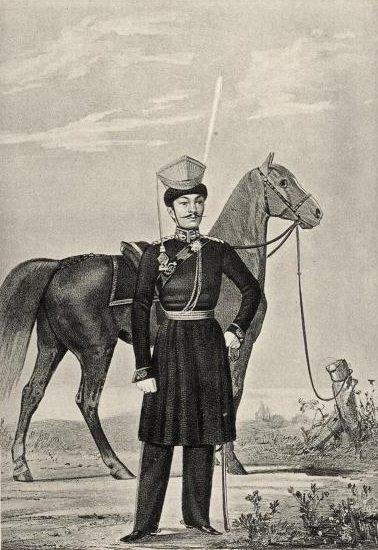The austere cover of night would fall across La Bleue Vallée in only a few hours. Colloquially known as ‘the Blue Valley, the vale was an oasis: a marshy, wetland forest sat to the north and a thick woodland anchored itself to the south. It served as the only passable terrain for caravans, armies, and travelers for many miles. Both the western and eastern approach were marked by high rising hills, whose interior slopes created the valley itself. It was wide enough for two full-sized armies to deploy comfortably, without being too restricted by either the marsh or the woodland.
Francisco Marion’s Imperial Army had made camp on the exterior slope of the eastern hill, outside the valley. The Allied camp was situated opposite, on the exterior slope of the western hill. The size and composition of both armies were concealed.
Marion had made a name for himself during his country’s Revolution, in which he had scored consecutive victories for the Republic against much larger armies, who were better trained and equipped than his own. And it was all due to his brilliance as a commander. Within a few short years the upstart general defeated the Royalists, ousted the royal family, and proclaimed himself Emperor. But his career did not end there.
Surrounding monarchs had watched the Revolution with keen interest, supporting the Royalists with money, arms, and even men. After the civil war Emperor Francisco condemned those nations who opposed him and his supporters. He launched preemptive invasions to subdue his would-be opponents, thrashing their armies time and time again and forcing them to sign unfavorable treaties. Coalitions were proposed and great battles fought, but it seemed as if nothing could stop this invincible opponent.
But Emperor Marion did not account for the terrible winter that had come. His campaign was stalled and he was forced to retreat, pestered by Dusmane horsemen. His route would take him through La Bleue Vallée. The Allies quickly assembled an army to blockade the western pass, and if Francisco wishes to make it home he must break through.
Phase One: Planning
Friedrich, Duke von Nordmann; Iouldouz Edicoglu Khan; Julian Mackeralini. The commanders of the Allied Army. Each one had brought men from their respective nation to partake in this battle, a Battle of the Nations. There were nearly 12,000 infantrymen from the Halldor Empire, a hefty contribution. Then there were approximately 6,000 skilled Dusmane horsemen to complement those infantrymen. Finally a regiment of artillery and a Republican Guard unit from Gauldin itself, fighting for the Allies.
The three armies encamped themselves on the western exterior slope, presenting an obstacle to Emperor Marion's own force, whose size and composition was currently unknown. Of course there was the infantry, cavalry, and artillery which had served the Emperor in his winter campaign, but he had called for reinforcements from surrounding states to assist him.
A central tent was erected in the center of the camp. Within sat a table and chairs, enough to sit the three commanders and their aides. Upon the table was a roughly drawn map of the Blue Valley. It was time for each commander to propose a strategy and determine where they wanted their regiments to be positioned.
Francisco Marion’s Imperial Army had made camp on the exterior slope of the eastern hill, outside the valley. The Allied camp was situated opposite, on the exterior slope of the western hill. The size and composition of both armies were concealed.
Marion had made a name for himself during his country’s Revolution, in which he had scored consecutive victories for the Republic against much larger armies, who were better trained and equipped than his own. And it was all due to his brilliance as a commander. Within a few short years the upstart general defeated the Royalists, ousted the royal family, and proclaimed himself Emperor. But his career did not end there.
Surrounding monarchs had watched the Revolution with keen interest, supporting the Royalists with money, arms, and even men. After the civil war Emperor Francisco condemned those nations who opposed him and his supporters. He launched preemptive invasions to subdue his would-be opponents, thrashing their armies time and time again and forcing them to sign unfavorable treaties. Coalitions were proposed and great battles fought, but it seemed as if nothing could stop this invincible opponent.
But Emperor Marion did not account for the terrible winter that had come. His campaign was stalled and he was forced to retreat, pestered by Dusmane horsemen. His route would take him through La Bleue Vallée. The Allies quickly assembled an army to blockade the western pass, and if Francisco wishes to make it home he must break through.
Phase One: Planning
Friedrich, Duke von Nordmann; Iouldouz Edicoglu Khan; Julian Mackeralini. The commanders of the Allied Army. Each one had brought men from their respective nation to partake in this battle, a Battle of the Nations. There were nearly 12,000 infantrymen from the Halldor Empire, a hefty contribution. Then there were approximately 6,000 skilled Dusmane horsemen to complement those infantrymen. Finally a regiment of artillery and a Republican Guard unit from Gauldin itself, fighting for the Allies.
The three armies encamped themselves on the western exterior slope, presenting an obstacle to Emperor Marion's own force, whose size and composition was currently unknown. Of course there was the infantry, cavalry, and artillery which had served the Emperor in his winter campaign, but he had called for reinforcements from surrounding states to assist him.
A central tent was erected in the center of the camp. Within sat a table and chairs, enough to sit the three commanders and their aides. Upon the table was a roughly drawn map of the Blue Valley. It was time for each commander to propose a strategy and determine where they wanted their regiments to be positioned.




